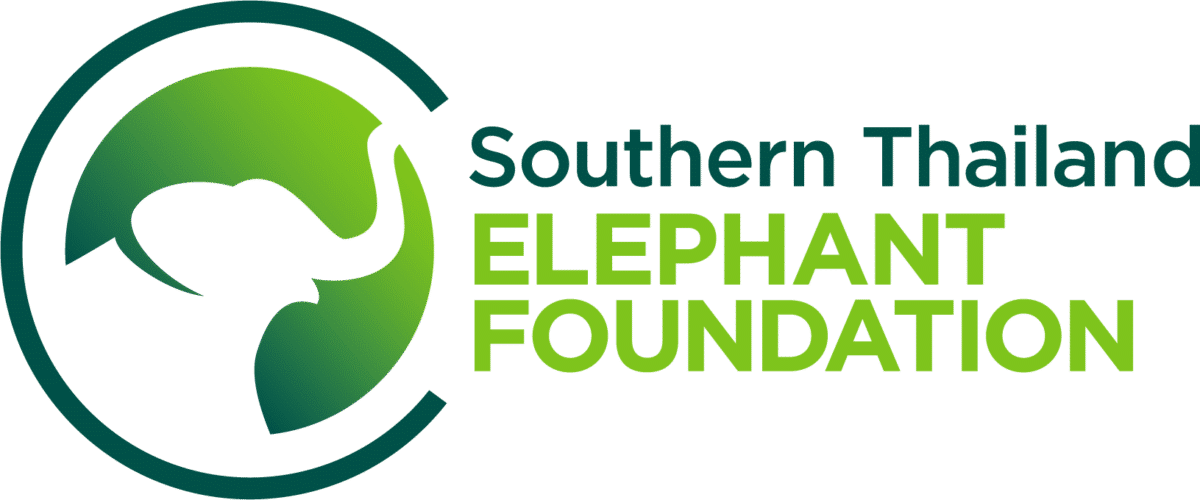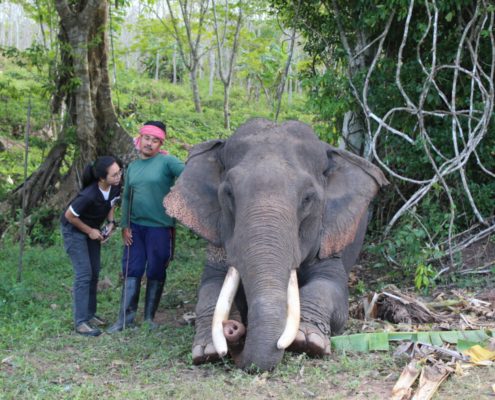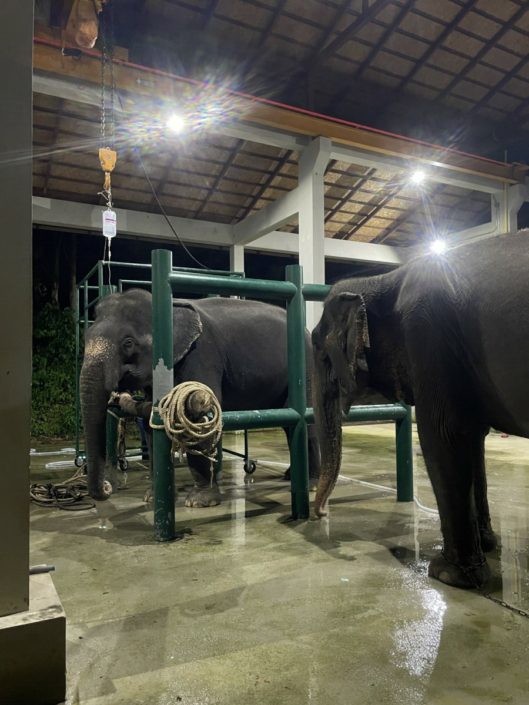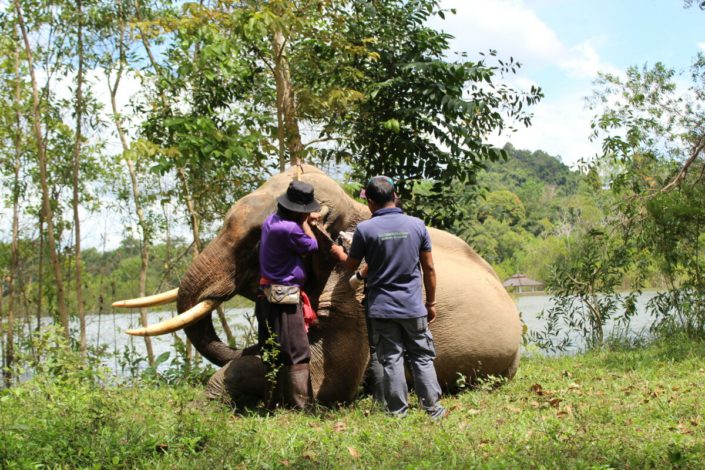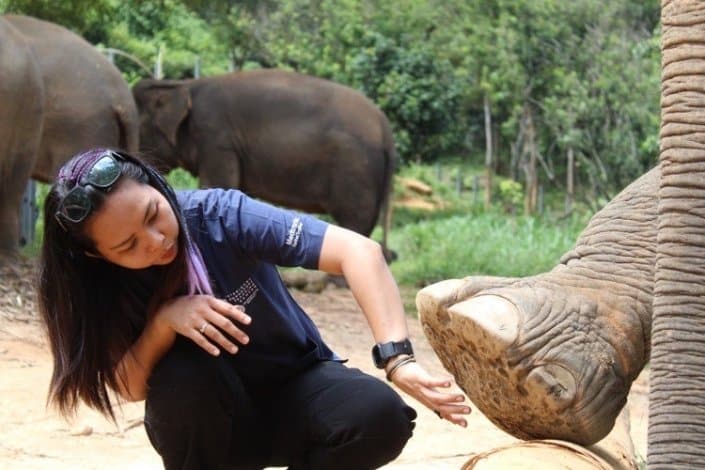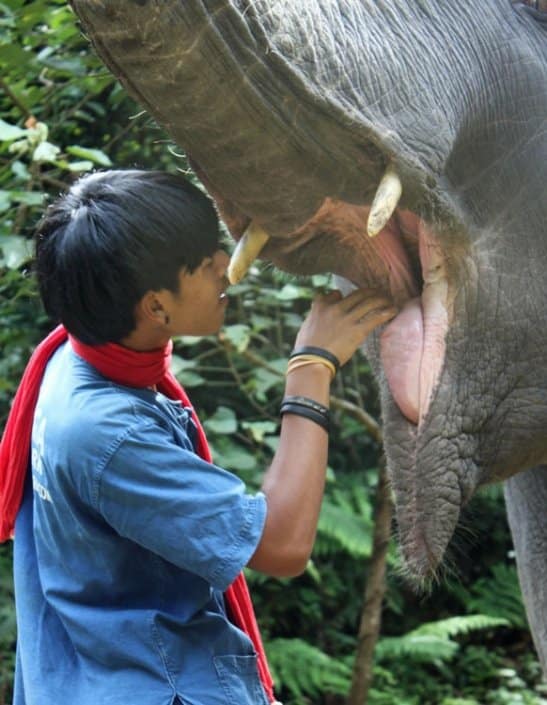An Elephant obligingly lies down for his mahout, so that our vet Dr Aon can examine him
Mahouts, keepers and animal carers from all over the world can maintain a high standard of welfare for their animals by ensuring an effective flow of communication between human and animal. By using positive reinforcement training to communicate with the animals in our care we can work together to achieve astounding results. Animals can be trained to accept injections and take medications, to move between enclosures or into transport crates, and to allow a whole host of medical procedures that would otherwise be unobtainable, such as attaching drips or cardiac monitoring.
For our vets and volunteers at the STEF elephant hospital, it is essential that the elephants they examine are well trained, both for the safety of the vets and for the benefit of the elephants. If an elephant cannot be approached, let alone injected or have a wound cleaned and dressed, they may suffer as a result. This became clear on a recent visit by our vets to an elephant sanctuary where the elephants did not have enough contact and training with humans. Our vets were unable to give them a proper medical check, let alone provide any treatment (see Vanessa Klabouch’s blog for day 19/01/2023).
Positive training
It is important that any training given is done with good understanding and without cruelty. Positive reinforcement works by ignoring any negative or undesirable behaviour, and instead rewarding the correct or desirable behaviour, so that the likelihood of that behaviour being performed again is increased. This is a passive and positive way to communicate what we would like our animals to do and it enables us to care for them to the best of our abilities. It also creates a stress-free environment for the animal who, through this method, will offer behaviours voluntarily and calmly.
Before any training of an elephant can begin, the mahout needs to already have a good relationship with his elephant. The pair must trust and respect each other enough to work together in the first place, and the training needs to begin when the elephant is relatively young. The mahout will need to teach his elephant the association between his ‘bridge’ such as a clicker, whistle or a word, and the chosen ‘reward’ such as a banana or a favourite toy. This is done initially by giving the animal a small reward and bridging. After this has been repeated several times, the animal will begin to anticipate the reward when the bridge is given.
Once this is achieved, simple behaviours can begin to be trained such as lifting a foot, which is something elephants will need to do often for their mahouts to ensure their feet are in good condition. The mahout starts by touching the top of the foot (usually with a stick) and immediately reward the elephant, this is repeated several times until the elephant is comfortable. Then the mahout will hold the stick slightly above the foot, and the animal will realise that he received the reward last time only when the stick touched his foot, so he will then bring his foot up to meet the stick in order to get his reward. This is repeated in small stages, known as approximations, until the foot is high enough for the mahout to inspect it for signs of infection or injury.
By using this method of positive reinforcement it allows animals to make their own choices, provides them with mental stimulation through learning and practices cooperation, making the mahout’s job of caring for an elephant a lot easier.
More can be found on the details of positive reinforcement training from the Elephant Conservation Center.
[Click on photos to enlarge and read captions]
